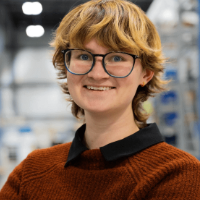You’re staring at a complex design on your computer. What’s next?
Anyone who has bought custom parts can confirm that the post-design phase can feel like an endless web scroll of options. Today, we’ll explore one potential option that can help you turn your design into a functional prototype faster.
With 38 years of converting experience, Strouse has helped bring numerous medical devices to market through rapid component development to full-scale production and an optimized production process.
You’ll learn about medical device prototyping and how a converter’s rapid prototyping and quality control capabilities might help you.
What is Medical Device Prototyping?
Medical device prototyping involves designing and testing different materials & product assemblies to determine the most functional and cost-effective means of building a device.
Why Use a Converter for Medical Device Prototyping?
One of the most significant advantages of using an adhesive converter is seeing your product in action.
A converter will provide you with hands-on product samples, which are a far more accurate indication of design success than speccing in the material from the get-go under the assumption that the adhesive will function as planned.
Furthermore, experienced converters offer critical engineering support to set you up for a fully optimized production process. They have the knowledge and experience to deliver effective custom products, plus the capability to ensure medical components are created in sterile environments as needed.
BENEFIT 1: RAPID PROTOTYPING
As previously stated, a converter has the proper resources and equipment to create accurate sample parts for you to further your testing.
These part samples will allow you to validate your testing alongside accurate parts and give you the ability to “fail fast” so you can improve your product more quickly. Any product design engineer will tell you failing quickly is in your best interest because it will cost less to identify issues earlier on in the design process.
For example, let’s say you didn’t properly test an adhesive and it failed on 20% of the products it was applied to. In this nightmare scenario, you’d need to re-spec the material, which would cost you significantly more than testing would have in the first place.
Full-scale production is a considerable investment. Rapid prototyping will help you explore different design options and make adjustments beforehand.
BENEFIT 2: PRODUCT CONSULTATION
Bringing a design from prototyping to full-scale production isn’t as simple as converting the design file to .dxf or .dwg (although, that’d be an excellent first step). Instead, this process often involves design adjustments that an experienced converter can help you make to improve the efficiency of your production process.
Overly tight tolerances and an excess of layers will increase your part's cost exponentially, but a converter can help improve your part’s design to lower the cost of production.
BENEFIT 3: COMPONENT QUALITY AND SAFETY
Many medical devices, such as those with microfluidic, DNA testing, or other delicate components, require a specialized clean environment to avoid contamination.
Converters like Strouse provide controlled manufacturing environments known as Clean Rooms. These rooms regulate temperature, humidity, particulate count, and bioburden, ensuring your adhesive products are produced with a reliable and proven process.
Medical products often have a strict quality standard that converters can achieve through quality control inspections that match your product’s needs.
BENEFIT 4: ONE-PASS PRODUCTION PROCESS
Choosing the right converter can simplify your production process into a single fluid operation.
Rather than laminate, cut, and package materials in individual steps, a converter will combine these actions into one process. This consolidation will save you time and money via:
- Increased production speed
- Better accuracy and quality
- Added efficiencies
- Reduced hand labor
- Less transportation, less hassle
- Minimized intrusion of biological matter
When Shouldn’t You Use a Converter For Medical Device Prototyping?
If your medical product is implantable, specifically a device inside the human body, a converter like Strouse isn’t the best fit for you.
While we’re comfortable working on stick-to-skin or transdermal applications, implantable devices require a separate list of requirements, and you’d be better off seeking a manufacturer specializing in internal body applications.
However, there are countless medical device attachment solutions that a converter would be more than adept at producing, so when in doubt, feel free to reach out and ask.
A converter can guide you through product development, from a rapid prototype to an efficient production process. So, if you’re ready to test a hands-on version of your adhesive design, reach out to a converter to help prototype your medical device.
Do you have more questions about medical devices? Contact us or check out our Learning Center for more information.







